 Relevant History welcomes Edith Maxwell, who writes the Local Foods Mysteries. The latest, ‘Til Dirt Do Us Part, was released in May 2014. As Tace Baker, she also writes a modern Quaker series, the Lauren Rousseau Mysteries; book 2, Bluffing is Murder, will be released 11 November 2014. Under the pen name Maddie Day, she writes the Country Store Mysteries. Her historical Carriagetown Mysteries series is in development. Maxwell has also published award-winning short stories of murderous revenge. She lives in an antique house north of Boston and blogs every weekday with the Wicked Cozy Authors. For more information, check her web site, and look for her on Facebook and Twitter.
Relevant History welcomes Edith Maxwell, who writes the Local Foods Mysteries. The latest, ‘Til Dirt Do Us Part, was released in May 2014. As Tace Baker, she also writes a modern Quaker series, the Lauren Rousseau Mysteries; book 2, Bluffing is Murder, will be released 11 November 2014. Under the pen name Maddie Day, she writes the Country Store Mysteries. Her historical Carriagetown Mysteries series is in development. Maxwell has also published award-winning short stories of murderous revenge. She lives in an antique house north of Boston and blogs every weekday with the Wicked Cozy Authors. For more information, check her web site, and look for her on Facebook and Twitter.
*****
No, not that kind of liberties! But John Greenleaf Whittier is a secondary character in my new historical Carriagetown Mysteries series, and I’m having fun bringing him back to life.
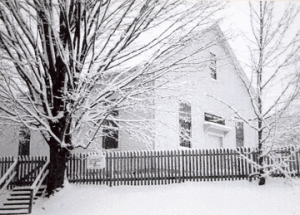 I’ve been a Quaker for a long time, and I worship at the same Friends Meetinghouse in northeastern Massachusetts where Whittier worshiped. He lived down the street (Friend Street, felicitously enough) and was on the building committee for the lovely simple light-filled structure that was completed in 1851.
I’ve been a Quaker for a long time, and I worship at the same Friends Meetinghouse in northeastern Massachusetts where Whittier worshiped. He lived down the street (Friend Street, felicitously enough) and was on the building committee for the lovely simple light-filled structure that was completed in 1851.
I also live in a house built in 1880 for the mill workers who wove cotton cloth in the tall brick buildings only a block away. And I worked as a childbirth educator and doula many years ago, stopping just short of being a midwife.
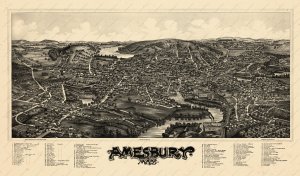 So I’ve put all these experiences together in a completed novel called Breaking the Silence, in which Quaker midwife Rose Carroll hears secrets and keeps confidences as she attends births of the rich and poor alike in 1888 Amesbury. When the town’s world-famed carriage industry is threatened by the work of an arsonist, and a carriage factory owner’s adult son is stabbed to death, Rose is drawn into solving the mystery. Things get dicey after the same man’s mistress is also murdered, leaving her one-week old baby without a mother. While struggling with being less than the perfect Friend, Rose draws on her strengths as a problem solver to bring two murderers to justice.
So I’ve put all these experiences together in a completed novel called Breaking the Silence, in which Quaker midwife Rose Carroll hears secrets and keeps confidences as she attends births of the rich and poor alike in 1888 Amesbury. When the town’s world-famed carriage industry is threatened by the work of an arsonist, and a carriage factory owner’s adult son is stabbed to death, Rose is drawn into solving the mystery. Things get dicey after the same man’s mistress is also murdered, leaving her one-week old baby without a mother. While struggling with being less than the perfect Friend, Rose draws on her strengths as a problem solver to bring two murderers to justice.
What did being a Friend in 1888 mean? And what was it like to deliver babies at home without advanced medical assistance, antibiotics, or sterile procedure?
Quakers
Quakers have always followed several testimonies: simplicity, integrity, peace, equality, community. For a couple of centuries they wore plain dress—simple clothes in muted colors—as a way to demonstrate simplicity and equality. They refused to go to war. They did not doff hats to those of higher class and did not use titles. They refused to swear an oath in court, because integrity guided their lives and they considered that they always told the truth. Friends of 1888 might still have used “plain speech,” using “thee” and “thy” to both familiars and strangers, which originally was to avoid distinguishing between two classes of people when “you” was used in a more honorific way. But by the late 1800s “theeing” and ”thying” only set Quakers apart, since the language had regularized to “you” for all second-person usage.
The testimonies haven’t changed for modern Quakers, although the manifestations have. Many Friends have been conscientious objectors, and simplicity might be now expressed by living in a modest-sized dwelling, owning a used car, and wearing a jacket from the consignment shop. Many modern Friends still refuse to swear an oath in court, instead requesting to affirm the truth.
 My protagonist, 27-year old Rose, is happy in her calling as a midwife, but she’s also being courted by a young doctor whose family is in high society one town over. When she’s invited to a fancy dinner dance, Rose consults with Whittier about wearing a party frock, and he gives his blessing. I’ve greatly enjoyed joining the Whittier Home Association and immersing myself in his life, and was gratified when one of the docents read my completed manuscript and said he thought I had captured the famous poet and abolitionist’s appearance and essence. And Rose lives in my house with her late sister’s widower and his five children, so I can imagine the story as I walk through not only my own home but the streets of my town.
My protagonist, 27-year old Rose, is happy in her calling as a midwife, but she’s also being courted by a young doctor whose family is in high society one town over. When she’s invited to a fancy dinner dance, Rose consults with Whittier about wearing a party frock, and he gives his blessing. I’ve greatly enjoyed joining the Whittier Home Association and immersing myself in his life, and was gratified when one of the docents read my completed manuscript and said he thought I had captured the famous poet and abolitionist’s appearance and essence. And Rose lives in my house with her late sister’s widower and his five children, so I can imagine the story as I walk through not only my own home but the streets of my town.
Midwifery
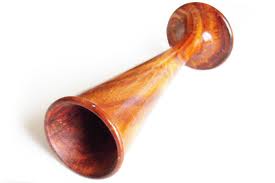 As for attending births, Rose uses a Pinard horn to listen to a baby’s heartbeat, and struggles with infections and the common diseases of the day, sometimes losing a baby to prematurity or a fever. But germ theory was already known, and she practices hand washing and sterilizing what she uses to cut the umbilical cord. She encourages her pregnant mothers to eat well and take fresh air and exercise, and helps postpartum women with both breastfeeding and depression. She’s had experience, as most modern independent midwives have, with difficult births like breech, twins, or when a baby’s shoulder gets stuck. These are skills that are falling out of many modern obstetricians’ tool boxes, because of the relative ease of surgical births, despite its still real risks to both mother and newborn.
As for attending births, Rose uses a Pinard horn to listen to a baby’s heartbeat, and struggles with infections and the common diseases of the day, sometimes losing a baby to prematurity or a fever. But germ theory was already known, and she practices hand washing and sterilizing what she uses to cut the umbilical cord. She encourages her pregnant mothers to eat well and take fresh air and exercise, and helps postpartum women with both breastfeeding and depression. She’s had experience, as most modern independent midwives have, with difficult births like breech, twins, or when a baby’s shoulder gets stuck. These are skills that are falling out of many modern obstetricians’ tool boxes, because of the relative ease of surgical births, despite its still real risks to both mother and newborn.
A Time of Change
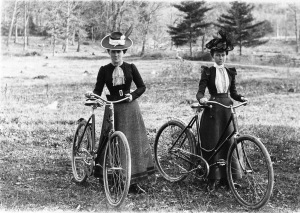 It’s a fascinating period to write about, just before the electric trolley replaced the horse-drawn system. When rich people might have electric lights indoors but most still used gas lamps. When the telephone existed but wasn’t common. When women wanting to ride the safety bicycle, with its equal-sized wheels, started to wear bloomers and cycling costumes and developed a less restrictive style of dress so they could move about more freely.
It’s a fascinating period to write about, just before the electric trolley replaced the horse-drawn system. When rich people might have electric lights indoors but most still used gas lamps. When the telephone existed but wasn’t common. When women wanting to ride the safety bicycle, with its equal-sized wheels, started to wear bloomers and cycling costumes and developed a less restrictive style of dress so they could move about more freely.
I piloted the premise of the Carriagetown Mysteries in an award-winning short story, also called “Breaking the Silence,” that was published in the anthology Best New England Crime Stories 2014: Stone Cold from Level Best Books. The series is not yet under contract, but I’m determined that it will be somewhere, sometime. “A Questionable Death,” a short story featuring Rose and her friend Bertie Winslow, will appear in History and Mystery, Oh My from Mystery and Horror, LLC. Stay tuned for news in this space, as they say!
*****
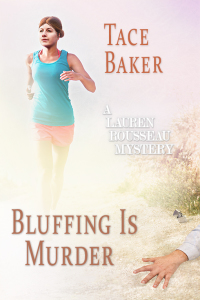 A big thanks to Edith Maxwell. She’ll give away an uncorrected proof (ARC) of her soon-to-be released book, Bluffing is Murder, to someone who contributes a comment on my blog this week. I’ll choose the winner from among those who comment by Friday at 6 p.m. ET. Delivery is available within the United States only.
A big thanks to Edith Maxwell. She’ll give away an uncorrected proof (ARC) of her soon-to-be released book, Bluffing is Murder, to someone who contributes a comment on my blog this week. I’ll choose the winner from among those who comment by Friday at 6 p.m. ET. Delivery is available within the United States only.
**********
Did you like what you read? Learn about downloads, discounts, and special offers from Relevant History authors and Suzanne Adair. Subscribe to Suzanne’s free newsletter.







